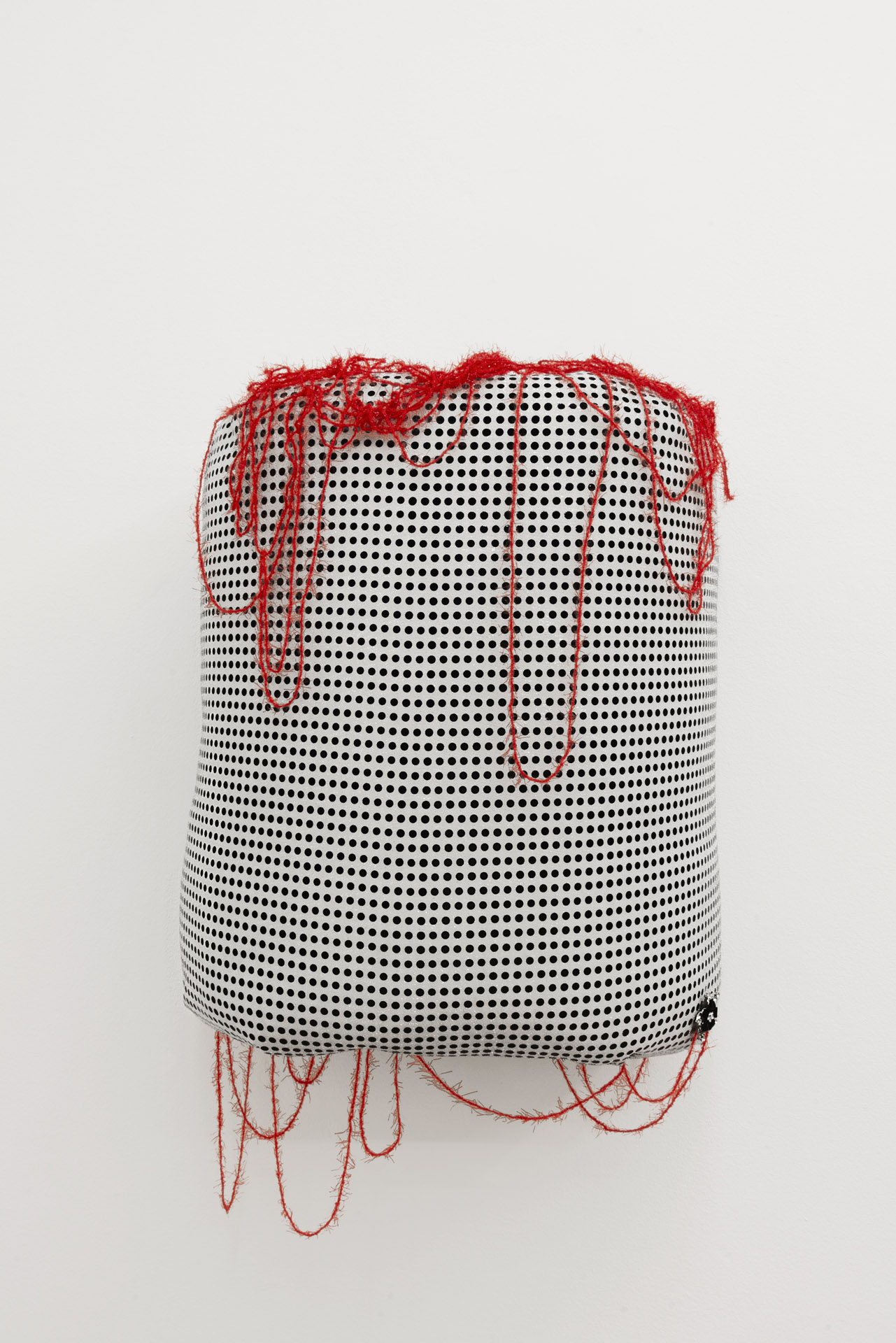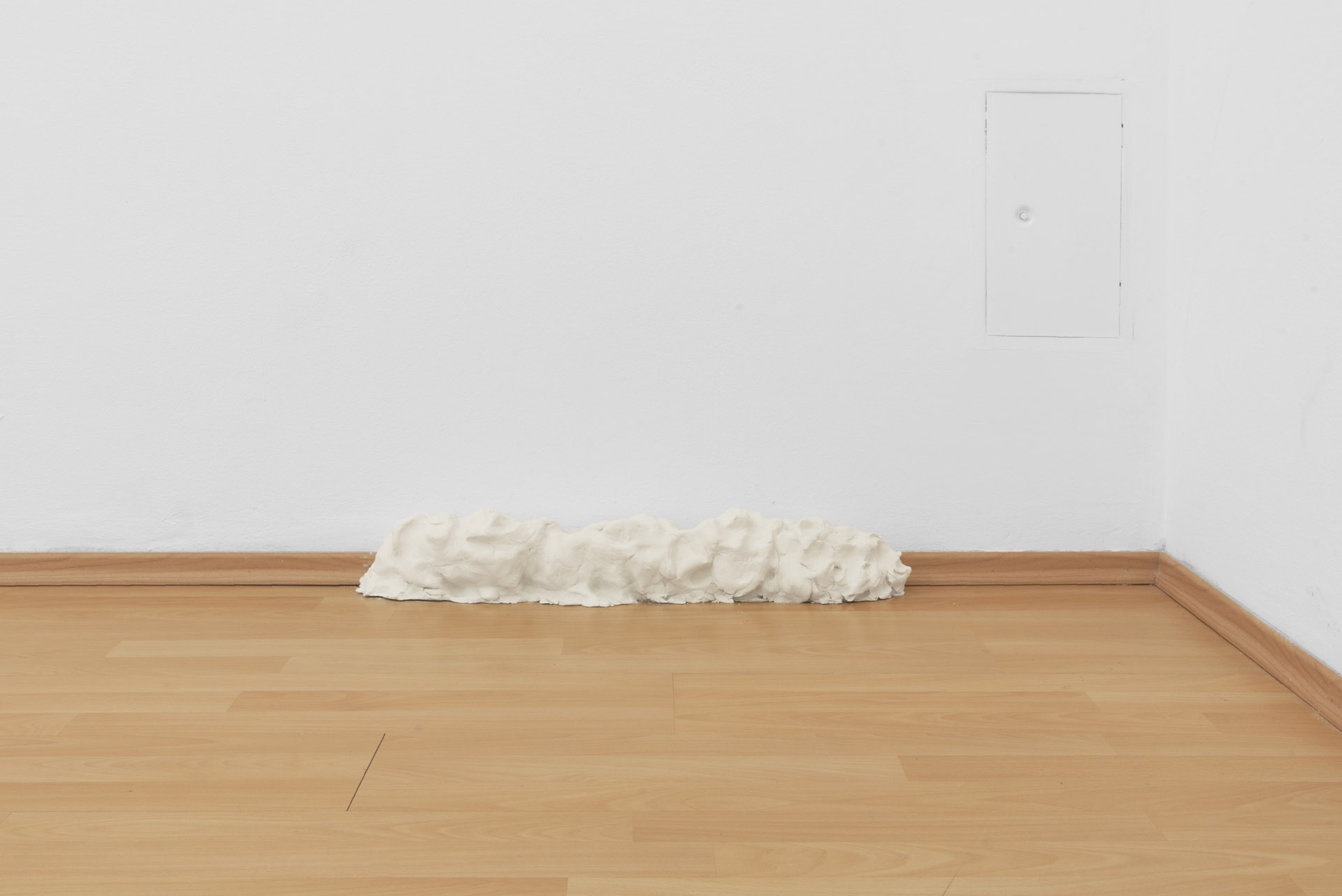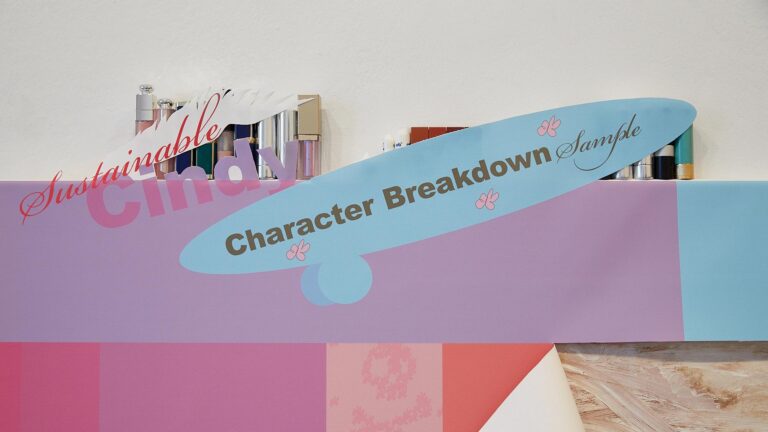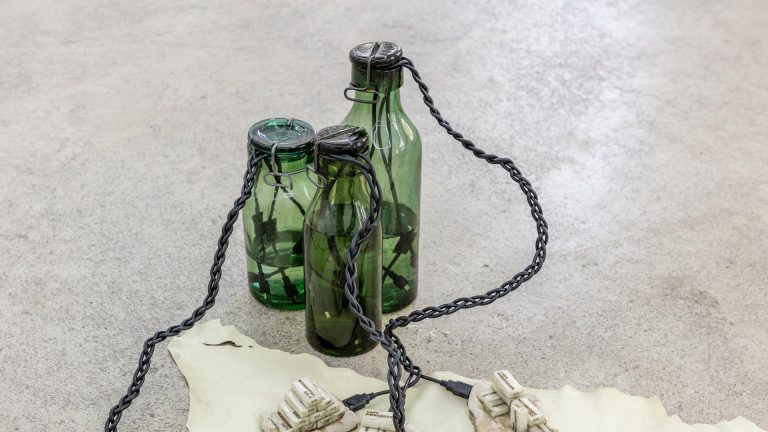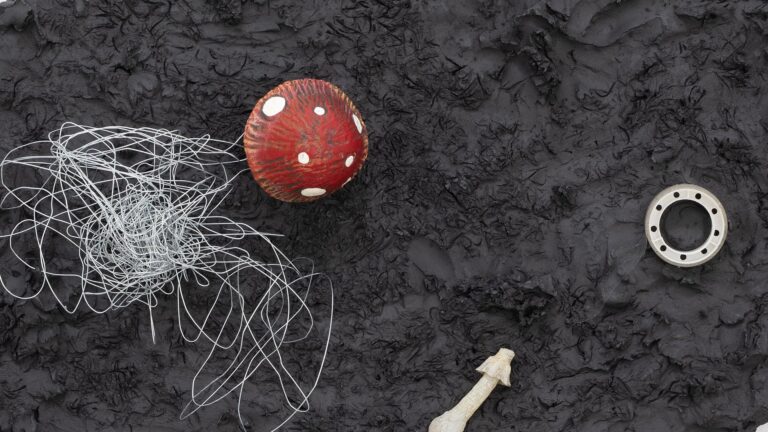Artists: Sveta Mordovskaya, Lucie Pia
Exhibition title: A Set-Up
Venue: Alienze, Vienna, Austria
Date: October 3 – November 2, 2021
Photography: images copyright and courtesy of the artists and Alienze, Vienna
The dyadic collaboration of any two individuals shares many of the characteristics of the dimorphous experience Sveta Mordovskaya’s and Lucie Pia’s collaborative exhibition A Set-Up invites us into. Not least the double construction or arrangement: on the one hand, an intuitively expedient assembly, which follows a common rhythm; and a rather attentive layout traversed by various degrees of tension, on the other.
These junctures, mediated in the exhibition in a sculptural manner, attract the viewer’s eyes as artworks. Earlier, when they were simply materials and not art yet, they spoke to the artists. Just as significant are the equally present but diverse experiences which they now enable. Those experiences correspond with the multiple levels of perception and communication that are at play in a pairing as well as in relation to it – relating from the position of a third person, a visitor or a guest. They multiply exponentially like (x to the) power (of n).
With this in mind, what is fun about working together seems to be a willfully created tight spot, into which the collaborating parties voluntarily enter – those parties absolutely include a view-er in this stage-like room as well as somebody who retells the story somewhere else.
In this set-up, which subtly traces potentialities, artworks lend corporeality to a third position; one that is neither objective and interpretative nor laid out to authentically express subjectivity. This could be understood to suggest that all hope lies in communication, insofar as it builds bridges, one way or the other. However, I would like to refer back to the charged relationship mentioned above, within which a set-up can also make one fed up and resemble a thin-aired standoff. How did we get here? Mordovskaya and Pia’s works seem to be asking.
Such a reliable presence – for it makes up its own reason to exist – has implications for friendship which should not be underestimated. In his essay The Capacity to be Alone (1958), the psychoanalyst D.W. Winnicott says about the introduction of a third, non-complementary position: “[…] I attach a great importance to this relationship, as I consider that it is the stuff out of which friendship is made.” Thinking together the title of that essay with the ideas on collaborative work proposed at the beginning of this text produces, almost mathematically, a prolific relation of what is regarded as one’s own and what is distinguishable from that. Out of this relationship something manifestly enduring and critically attendant emerges, qualities common to the otherwise distinct spheres of art and friendship.
-BR







